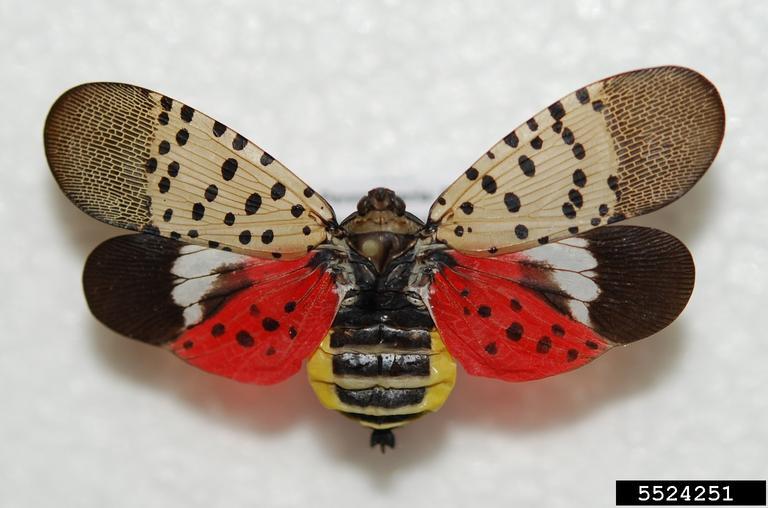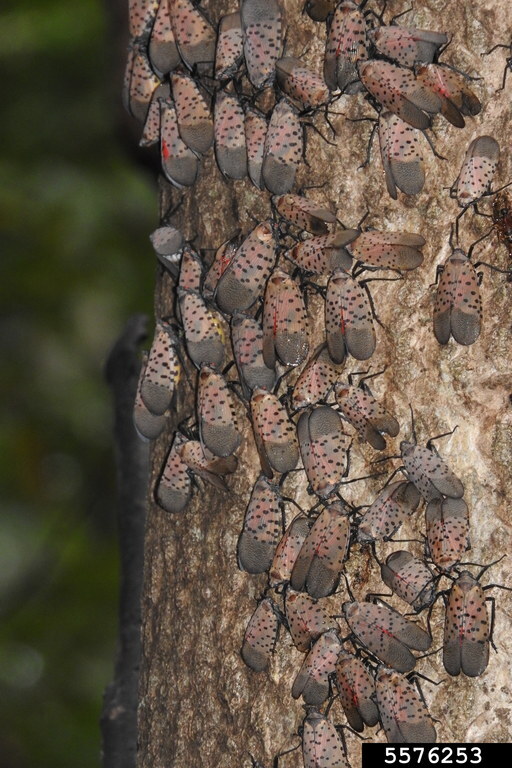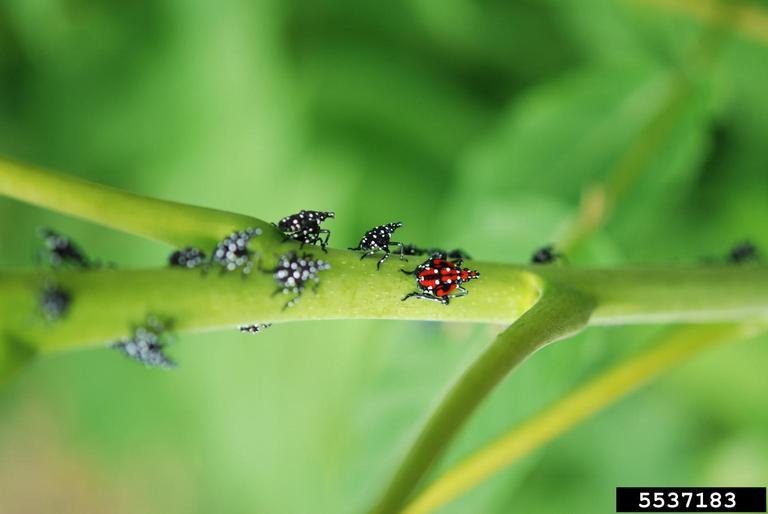Invasive Species Update – Spotted Lanternfly

We have long been hearing about not moving firewood and checking materials being moved from one place to another for potential invasive insect hitchhikers. Staying vigilant about doing so is a must, as invasive insects are prevalent around the State of Ohio. One such insect we should all be aware of is the spotted lanternfly (SLF). SLF, a plant hopper, is a native insect to China, India, and Vietnam. SLF was first detected in eastern Pennsylvania in 2014 and has been detected in many eastern States from New Hampshire to North Carolina, as well as Michigan and Indiana. Ohio populations were found in Cuyahoga, Lorrain, and Jefferson Counties in 2021, and late last year, SLF was confirmed in Hamilton County (Ohio Department of Agriculture. Facebook, 13 Oct. 2022, Ohio Department of Agriculture Facebook.).
According to the United States Department of Agriculture (USDA), “Adult spotted lanternflies are about 1-inch long and one-half inch wide, and they have large and visually striking wings. Their forewings are light brown with black spots at the front and a speckled band at the rear. Their hind wings are scarlet with black spots at the front and white and black bars at the rear. Their abdomen is yellow with black bars. Nymphs in their early stages of development appear black with white spots and turn to a red phase before becoming adults. Egg masses are yellowish-brown in color, and most are covered with a gray, waxy coating prior to hatching.”

SLF lays eggs on smooth host plant surfaces and non-host materials, such as bricks, stones, outdoor furniture, playground equipment, firewood, etc. Eggs hatch in the spring and early summer, and nymphs feed on a wide range of host plants by sucking sap from young stems and branches. Adults appear in late July and start to feed. As the adults feed, they excrete a sticky, sugary substance called honeydew. The fluid builds up on plants and the ground underneath the infested plants, causing sooty mold to form. The feeding weakens the plant, reducing photosynthesis and eventually can lead to killing the plant.

SLF can fly short distances, walk, and jump, but humans help its long-distance movement by moving infested materials. According to the Ohio Department of Agriculture (ODA), “On October 28th, 2021, the ODA announced a quarantine to combat the spread of the spotted lanternfly. SLF is now designated as a destructive plant pest under Ohio law, which increases inspections and restricts movement of certain items from infested counties in Ohio and other states into non-infested Ohio counties.”
If you suspect you have found SLF, please call or email the Plant Pest Control Section of the Ohio Department of Agriculture: (614) 728-6400 or plantpest@agri.ohio.gov or report via the EDDMapS Great Lakes Early Detection Network mobile app.
For more information regarding SLF, Warren County Soil and Water Conservation Di



